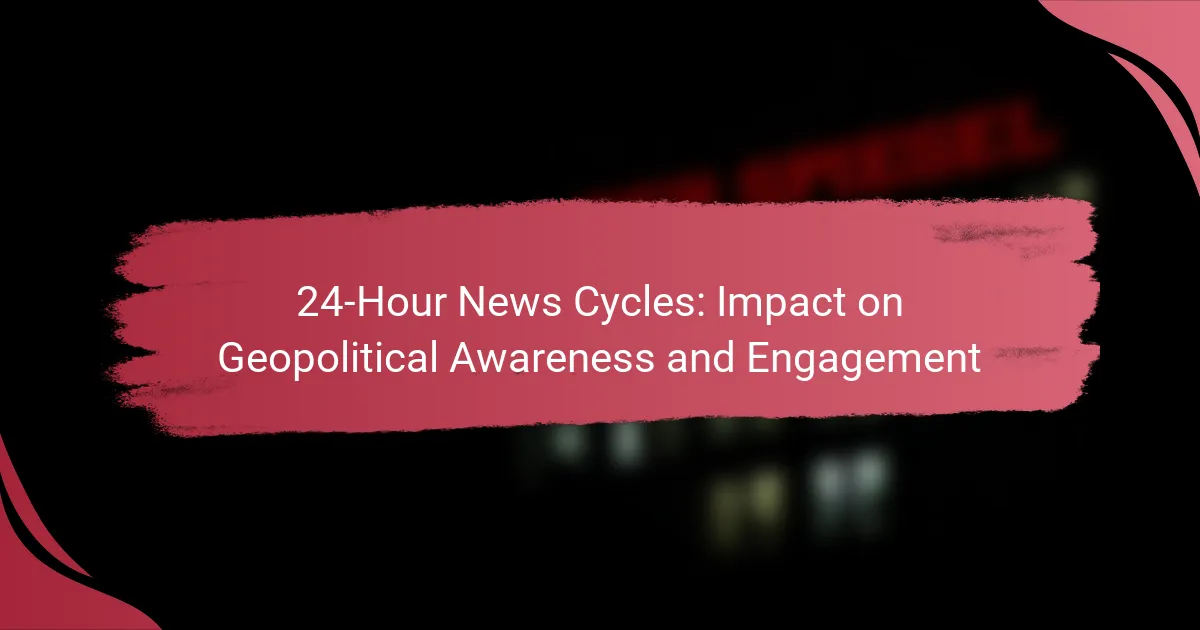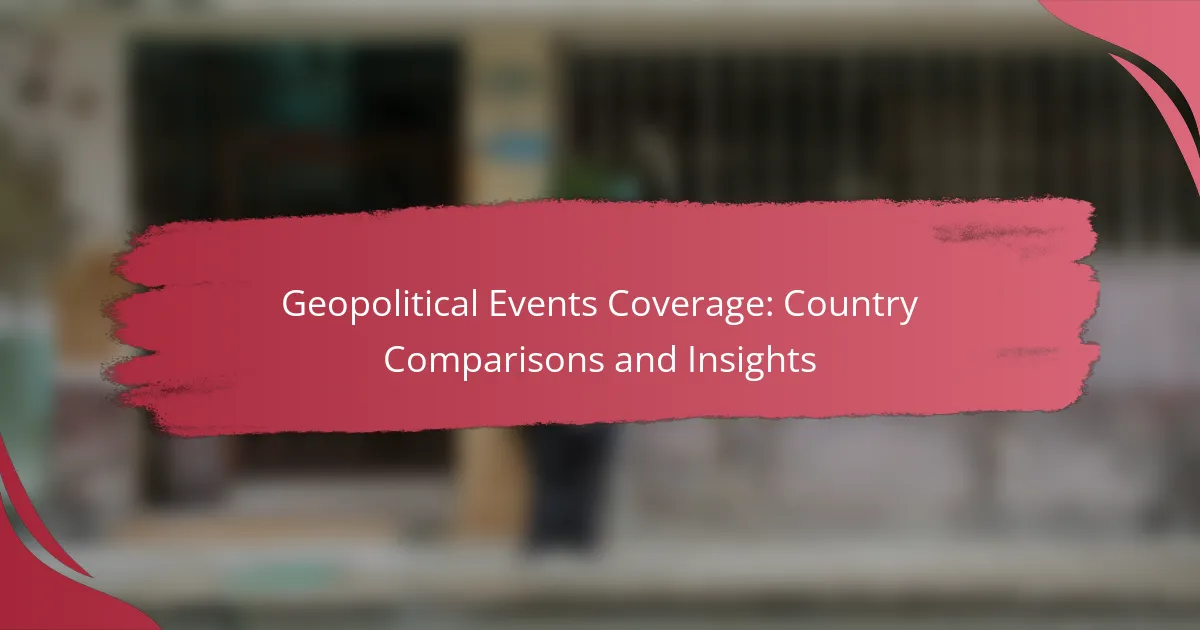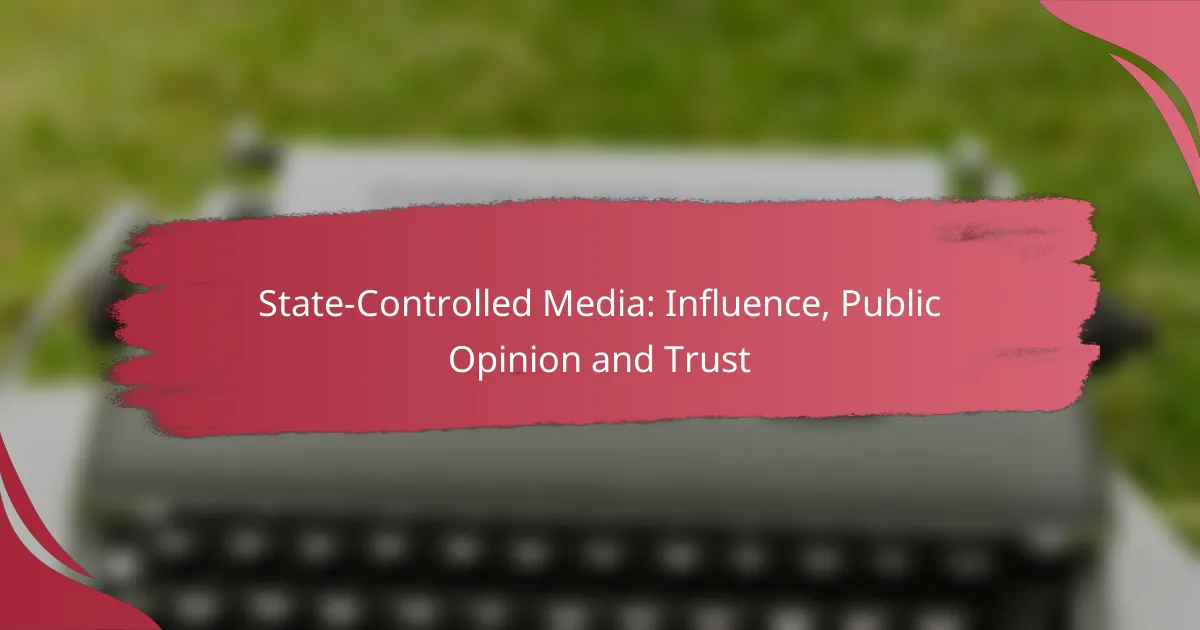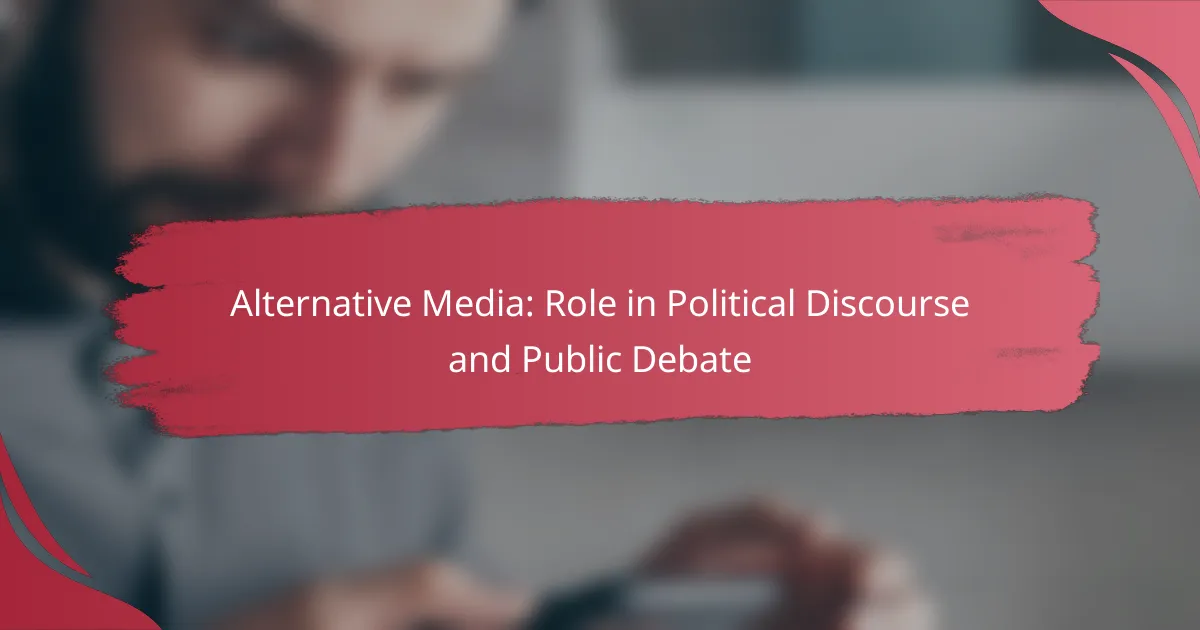The advent of 24-hour news cycles has transformed the landscape of geopolitical awareness, offering continuous updates on global events and their local implications. This relentless stream of information not only keeps individuals informed but also fosters greater audience engagement, encouraging active participation in discussions surrounding current affairs.
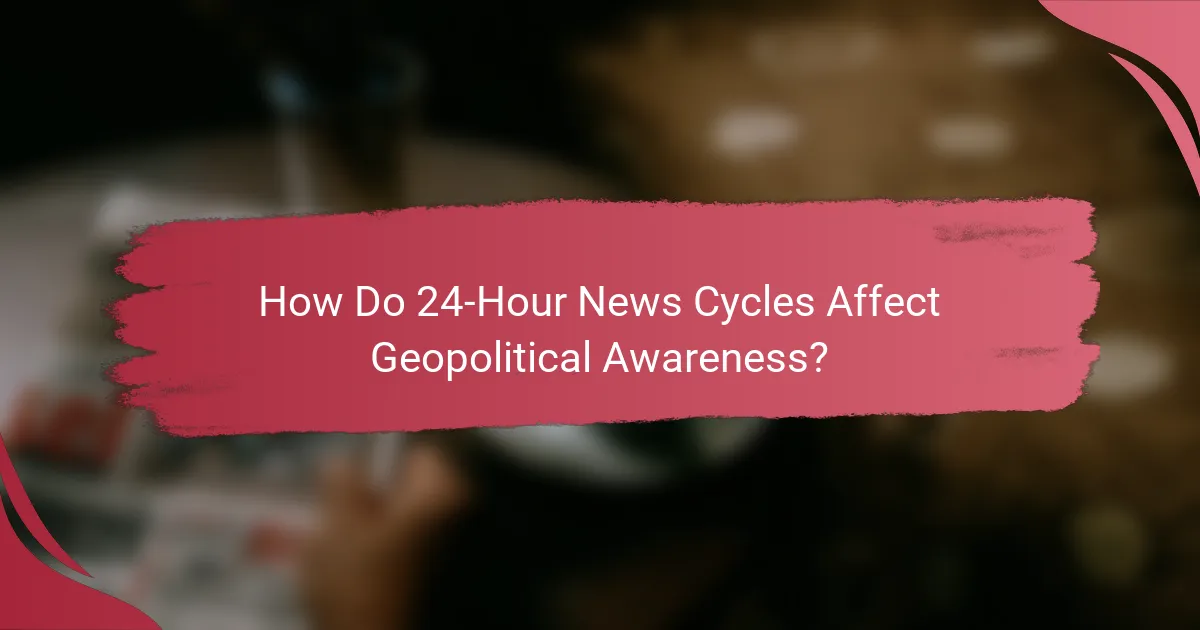
How Do 24-Hour News Cycles Affect Geopolitical Awareness?
24-hour news cycles significantly enhance geopolitical awareness by providing continuous coverage of global events. This constant flow of information allows individuals to stay informed about international developments and their implications on local and global scales.
Increased access to information
The rise of 24-hour news cycles has democratized access to information, allowing people from various backgrounds to engage with global issues. News outlets, social media platforms, and online forums provide diverse perspectives, making it easier for individuals to understand complex geopolitical situations.
For instance, a person in Europe can follow developments in Asia or the Americas in real-time, fostering a more interconnected understanding of world affairs. This access can lead to a more informed public, capable of participating in discussions about international policies and events.
Real-time updates on global events
Real-time updates are a hallmark of 24-hour news cycles, enabling audiences to receive immediate information about significant global events. This immediacy can heighten awareness of crises, such as natural disasters or political upheavals, prompting quicker public and governmental responses.
For example, during a conflict, news outlets provide live updates that inform citizens about the evolving situation, which can influence public opinion and policy decisions. However, the rapid pace of news can also lead to misinformation if not critically assessed.
Enhanced public discourse
The constant stream of news fosters enhanced public discourse around geopolitical issues. With more information available, individuals are encouraged to engage in discussions, debates, and advocacy related to international matters.
Online platforms facilitate this discourse, allowing users to share opinions and insights. However, it is essential for participants to critically evaluate sources to avoid spreading misinformation and to ensure that discussions are based on accurate and reliable information.

What Are the Impacts of Continuous News Coverage on Engagement?
Continuous news coverage significantly boosts audience engagement by providing real-time updates and fostering a sense of immediacy. This constant flow of information encourages individuals to stay informed and participate in discussions about current events.
Higher audience engagement levels
With the rise of 24-hour news cycles, audience engagement has reached unprecedented levels. Viewers are more likely to interact with news content through comments, shares, and discussions on social media platforms. This interaction often leads to a deeper investment in the news topics being covered.
For instance, breaking news stories can generate thousands of comments and shares within minutes, showcasing how continuous coverage captivates audiences and keeps them actively involved in the conversation.
Shift in news consumption habits
The availability of news around the clock has transformed how people consume information. Many individuals now prefer to receive updates via mobile devices and social media rather than traditional outlets like newspapers or evening news broadcasts. This shift has led to a demand for bite-sized, easily digestible content that fits into busy lifestyles.
As a result, news organizations have adapted by creating shorter articles, video snippets, and live updates that cater to the fast-paced nature of modern life, allowing audiences to stay informed on-the-go.
Influence on public opinion
Continuous news coverage plays a crucial role in shaping public opinion by highlighting specific issues and framing them in particular ways. The constant stream of information can create urgency around certain topics, influencing how the public perceives their importance. For example, extensive coverage of a geopolitical crisis can lead to heightened awareness and concern among the populace.
Moreover, the repetitive nature of news cycles can reinforce certain narratives, making them more prominent in the minds of the audience. This phenomenon underscores the responsibility of news organizations to present balanced and accurate information to avoid skewing public perception.
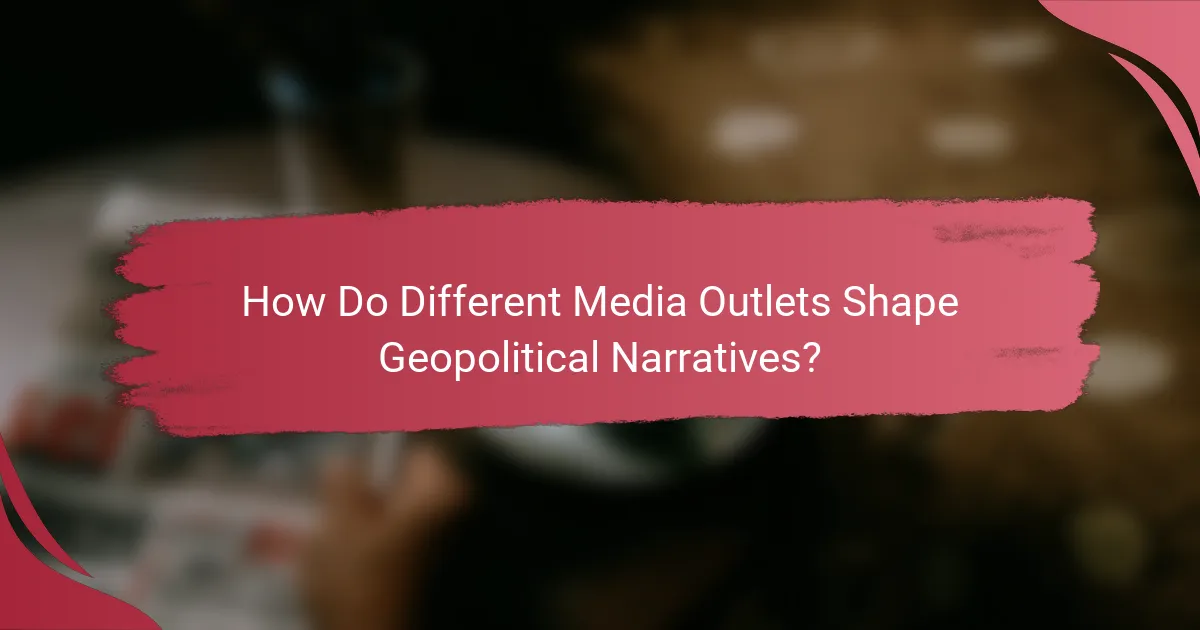
How Do Different Media Outlets Shape Geopolitical Narratives?
Different media outlets significantly influence geopolitical narratives by selecting which stories to highlight and how to present them. This selection process can shape public perception and understanding of international events, often reflecting the outlet’s editorial stance or audience preferences.
Bias in reporting
Bias in reporting can manifest in various forms, including selective coverage, language choices, and the portrayal of sources. For instance, a media outlet may emphasize certain aspects of a conflict while downplaying others, leading to a skewed understanding of the situation. Recognizing bias requires critical consumption of news, where readers should compare multiple sources to gain a balanced view.
Common indicators of bias include the use of emotionally charged language or the framing of events to align with a particular political agenda. Awareness of these biases can help audiences navigate the complex landscape of geopolitical reporting.
Framing of international issues
Framing refers to how media outlets present and contextualize international issues, influencing audience interpretation. For example, the framing of a humanitarian crisis as a “refugee invasion” versus a “humanitarian emergency” can evoke different emotional responses and policy reactions. This framing can affect public engagement and the perceived urgency of international issues.
Effective framing can mobilize public opinion and influence policymakers. Audiences should be aware of how issues are framed and consider alternative perspectives to develop a more nuanced understanding of global events.
Role of major networks like CNN and BBC
Major networks like CNN and BBC play a crucial role in shaping global geopolitical narratives due to their extensive reach and influence. These outlets often set the agenda for international news coverage, impacting what stories are prioritized and how they are reported. Their editorial choices can significantly affect public awareness and engagement with geopolitical issues.
Both networks have established reputations for journalistic standards, but they also face criticism for perceived biases or framing techniques. Understanding the role of these networks can help audiences critically assess the information they receive and seek diverse viewpoints to enhance their geopolitical awareness.
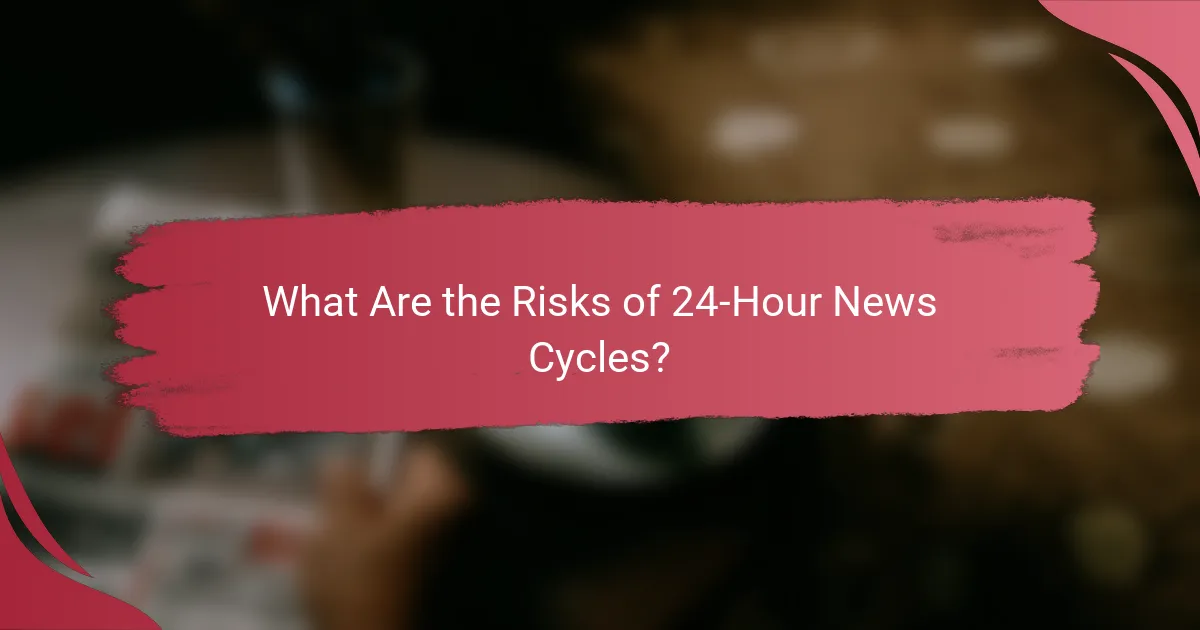
What Are the Risks of 24-Hour News Cycles?
The 24-hour news cycle poses several risks, including information overload, the spread of misinformation, and desensitization to global crises. These factors can significantly impact public understanding and engagement with geopolitical issues.
Information overload
Information overload occurs when individuals are bombarded with excessive news content, making it difficult to discern important information. With constant updates and breaking news alerts, people may struggle to process and retain relevant details about global events.
This overwhelming flow of information can lead to cognitive fatigue, where individuals become less engaged and more likely to overlook significant geopolitical developments. To mitigate this, it is essential to prioritize credible sources and focus on key stories rather than trying to consume everything.
Spread of misinformation
The rapid pace of news dissemination can facilitate the spread of misinformation, as unverified stories often circulate widely before being fact-checked. This can lead to confusion and misinterpretation of critical geopolitical events, impacting public opinion and policy decisions.
To combat misinformation, consumers should verify news from multiple reputable sources and be cautious of sensational headlines. Engaging with fact-checking organizations can also help clarify the accuracy of information before sharing it.
Desensitization to global crises
Continuous exposure to distressing news can result in desensitization, where individuals become numb to the severity of global crises. This emotional fatigue can diminish empathy and reduce the likelihood of civic engagement or support for humanitarian efforts.
To counteract desensitization, it is beneficial to take breaks from news consumption and engage with content that highlights positive developments or solutions. Balancing exposure to distressing news with uplifting stories can foster a more nuanced understanding of global issues.

How Can Audiences Navigate 24-Hour News Effectively?
Audiences can navigate 24-hour news by developing critical media literacy, utilizing diverse news sources, and employing fact-checking resources. These strategies help individuals discern reliable information from sensationalism and misinformation.
Critical media literacy
Critical media literacy involves understanding how media influences perceptions and recognizing bias in news reporting. Audiences should question the motives behind news stories, considering who produced the content and why.
To enhance media literacy, individuals can engage in discussions about news articles, analyze the language used, and identify emotional appeals. This practice helps in distinguishing between objective reporting and opinion pieces.
Diverse news sources
Utilizing diverse news sources is essential for gaining a well-rounded perspective on current events. Relying on a single outlet can lead to a narrow understanding of complex issues.
Audiences should seek information from various platforms, including international news organizations, local outlets, and independent journalism. This approach can reveal different angles on the same story, enriching overall comprehension.
Fact-checking resources
Fact-checking resources are vital tools for verifying the accuracy of news claims. Websites like Snopes, FactCheck.org, and PolitiFact provide assessments of popular stories and statements made by public figures.
Before sharing news, audiences should take a moment to check these resources. This practice not only prevents the spread of misinformation but also encourages a culture of accountability in media consumption.
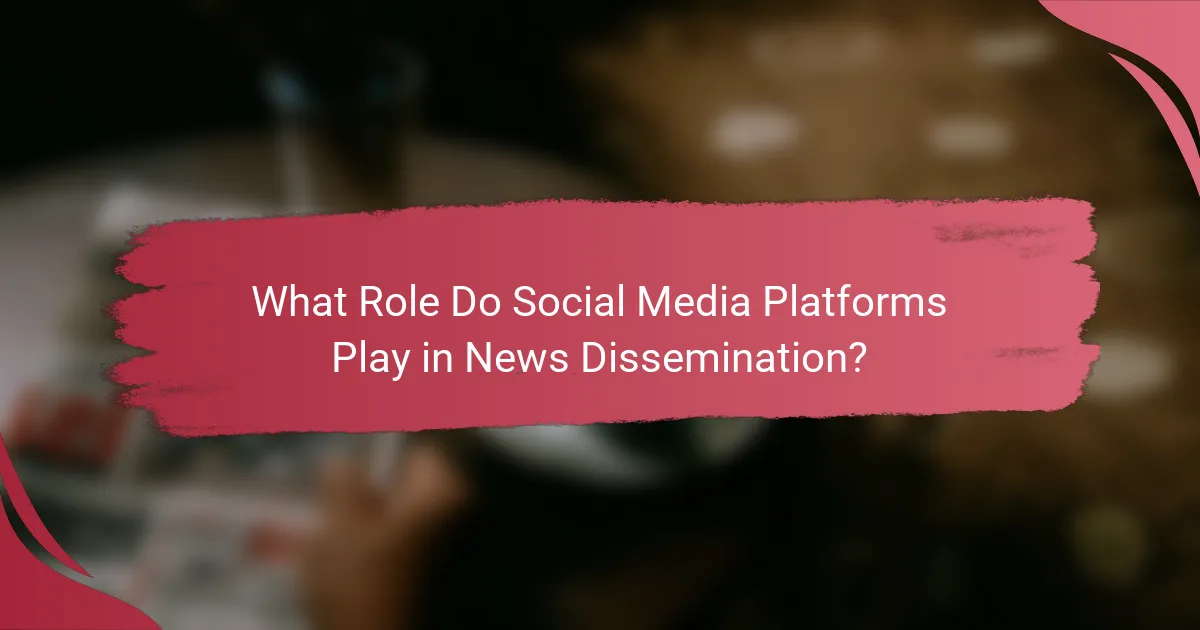
What Role Do Social Media Platforms Play in News Dissemination?
Social media platforms significantly influence how news is shared and consumed, enabling rapid dissemination of information across vast audiences. They serve as primary channels for breaking news, allowing users to engage with content in real-time and shape public discourse.
Real-time sharing of news
Social media allows users to share news instantly, often within moments of an event occurring. This immediacy can lead to heightened awareness of geopolitical issues, as users receive updates from various sources, including traditional media and citizen journalists.
For example, during major international incidents, platforms like Twitter and Facebook can provide live updates, images, and videos, often before mainstream news outlets can report. This real-time sharing can enhance public engagement and prompt discussions on critical global matters.
Influence of algorithms on visibility
Algorithms on social media platforms determine which news stories are seen by users, often prioritizing content based on engagement metrics. This means that sensational or emotionally charged news may receive more visibility, potentially skewing public perception of events.
Users should be aware that the news they encounter is often curated based on their interests and interactions, which can create echo chambers. To mitigate this, it’s advisable to follow a diverse range of sources and actively seek out different perspectives on geopolitical issues.
